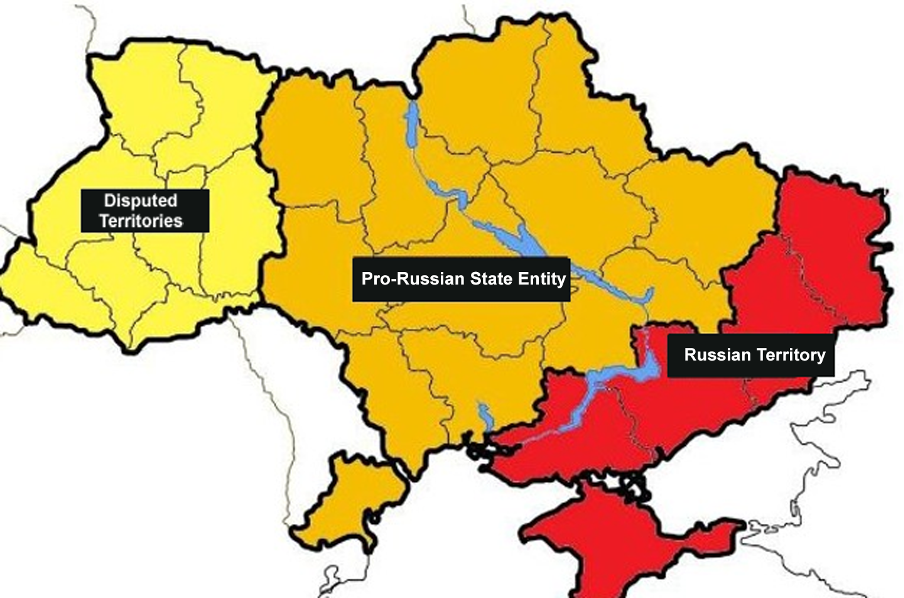A Ukrainian kamikaze drone strike hitting a major ammunition storage facility in central Russia on Wednesday was likely the most damaging long-range attack launched by Kyiv in 30 months of combat, and possibly the most devastating air strike ever to hit Russia, World War II included.
Kremlin-controlled information platforms on Thursday were downplaying damage reports and assuring the public that the situation was well under control. But one day after a Ukrainian nighttime air raid against Toropets Northeast Ammunition Depot, in Russia’s Tver region, evidence was pointing to a wildly successful long-range strike by Kyiv against a war-critical piece of Russian military infrastructure.
JOIN US ON TELEGRAM
Follow our coverage of the war on the @Kyivpost_official.
Following a 2018-2020 renovation of the site, Russian state-controlled media had billed Toropets as the most modern and attack-resistant munitions storage facility in all of the Russian Federation.
Eyewitness recordings of the early morning strike, posted online by local news platforms and social media, contain audio of jet engines passing overhead at tree-top level at five- to ten-second intervals, followed by explosions in the distance. Photographs and videos of almost apocalyptic fires lighting the night horizon and explosions breaking windows even 6 kilometers from the epicenter flooded local chat groups.
Ukraine’s military intelligence agency, HUR, responsible for Ukraine’s long-range bombardment of Russia, first launched jet-powered drones in an Aug. 24 attack against an ammunition depot in Russia’s Voronezh region. Reportedly around 20 aircraft flew in that strike, which set storage bunkers ablaze for hours before firemen could control the fires.

Ukraine’s Lost 40% of Kursk Region Gains Official Says
Aircraft counts in Ukraine’s operation, hitting the even bigger Toropets depot on Thursday, according to eyewitness estimates, put the raid’s drone count at least 100 aircraft. Some eyewitnesses told local media they heard 10-15 subsequent blasts, orders of magnitude more powerful than explosions from individual drone impacts.

A Wednesday Defense Ministry announcement said air defenses shot down 54 UAVs overnight on all fronts, but did not mention the Tver region or Toropets base. Tver region governor Igor Rudenya in a Wednesday statement said that “falling drone fragments” had set portions of the Toropets facility on fire but that emergency responders were on the scene and that authorities had the situation in hand.
Photographs snapped at ground level and geolocated to viewpoints around the Toropets base showed more than two-thirds the length of the five square kilometer site still blazing violently by midday Thursday. The US-managed NASA satellite network recorded hot spots consistent with major fires engulfing about half the territory of the facility. The satellite group MAXAR published images of smoke distinctly visible from space.
Open-source seismic recordings published on Wednesday and Thursday, among them by the Norwegian seismic monitoring group NORSAR, picked up 13 explosions around Toropets taking place during or in the hours after the Ukrainian attack. Each “seismic event” registered at between 2.0-2.8 magnitude, with energy comparable to a small earthquake, news reports said.
Outlying homes in three villages located a half kilometer or less from the north fence of the facility were damaged, according to news reports. Some local social media reported the village Tsikarevo, less than 300 meters from Toropets’ northeastern security fence, was completely destroyed. The local television news platform RBC-TV reported fires had surrounded and consumed several villages and towns, forcing hundreds of people to flee their homes.
Social media recorded smoke and fires burning throughout the day, and explosions continuing for hours as individual munitions cooked off. Some video showed people identifying themselves as residents of Tsikarevo and stating they had no way to escape the conflagration but by boat via a nearby lake, because explosions at Toropets had flattened nearby forests and made all roads impassable.
Images published by Maxar Intelligence & Space systems on Thursday showed the Ukrainian target planners appeared to have concentrated on the modernized section of the storage base, adjacent to Tsikarevo village, and that reinforced at least 13 ammunition bunkers, as well as unreinforced buildings and barracks, had suffered substantial damage or were destroyed.
Still-burning fires and smoke were limiting satellites’ view of the facility and later confirmation of more damage was possible. Unless the fires were put out, as-yet undamaged bunkers could overheat and explode, military analysts said.

Local media variously reported death tolls from a low of ten to more than two hundred. Many news reports said victims were mostly service personnel at the base or civilians caught in the initial blasts, or later trapped by fires. The state-run RIA Novosti on Thursday reported 13 people were hospitalized but no one was killed.
Prior to Russia’s February 2022 invasion of Ukraine, the Toropets site had served as the Russian army’s main European storage site for artillery rockets and missiles. Inventory reportedly included tens of thousands of 122mm artillery rockets, as well as smaller numbers of S-300 and S-400 heavy anti-aircraft missiles, Soviet-era Tochka-U tactical missiles, and the Iskander missile, a modernized nuclear capable weapon currently used by Russia mostly to bombard Ukrainian cities and military targets with conventional warheads.
According to Ukrainian military researchers, logisticians at Toropets supply Russian forces in all sectors but most critically to troops in Russia’s Kursk region and in Ukraine’s Kharkiv region.
According to unconfirmed reports, stocks of the North Korean KN-23 missile, a ballistic weapon recently delivered by North Korea to Russia in defiance of arms embargoes on Pyongyang, also were in Toropets at the time of the Ukrainian attack. According to pre-war Kremlin statements, base maximum rated capacity was about 30,000 tons of munitions of all types.
The Russian Air Force unofficial spokesman FighterBomber, a former pilot, in a Thursday Telegram entry said that the amount of explosives on hand when the Ukrainian drones nosed in was substantially more than officially allowed because “since the start of the war… no one has paid any attention to safety rules.”
Although it was not clear how much TNT-equivalent detonated all at once at Toropets, by Thursday the scale of destruction following the Ukrainian strike seemed on track to place the blasts there among the largest non-nuclear explosions in history. In 1947, in probably Europe’s biggest single blast ever, British army engineers detonated 6,700 tons of WWII-era ammunition stored on the German North Sea Island Heligoland to dispose of it.
Anastasiya Kashevarova, a war supporter and Kremlin approved milblogger, blamed former Vice Defense Minister Dmitry Bulgakov as culpable for the massive explosions and loss of military materiel and life at Toropets. He is currently in state custody pending graft and corruption charges.
According to Russian government news agency TASS, while serving as the Russian army’s top logistics officer Bulgakov may have participated in large-scale embezzlement schemes delivering low-quality goods and services to the military at inflated prices. He was arrested in July 2024.
Russian news platforms on Thursday in reports on the Toropets attack and its cause frequently profiled video of Bulgakov presiding at the Toropets base opening ceremony in 2018 and declaring the facility one of the world’s most modern, meeting “the highest international standards” and so well-built that its bunkers could hold out against a nuclear blast.

The independent Russian research group Gulagu.net, in a recent investigation, said that state prosecutors have evidence that as much as 30 percent of state funding to renovate the Toropets base, some $16 million, was stolen by army logisticians. Kyiv Post was unable to locate Bulgakov for comment.
You can also highlight the text and press Ctrl + Enter






